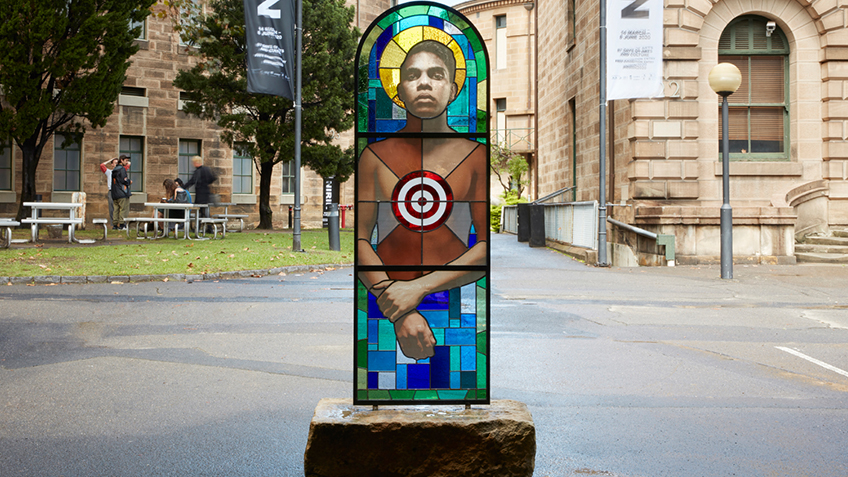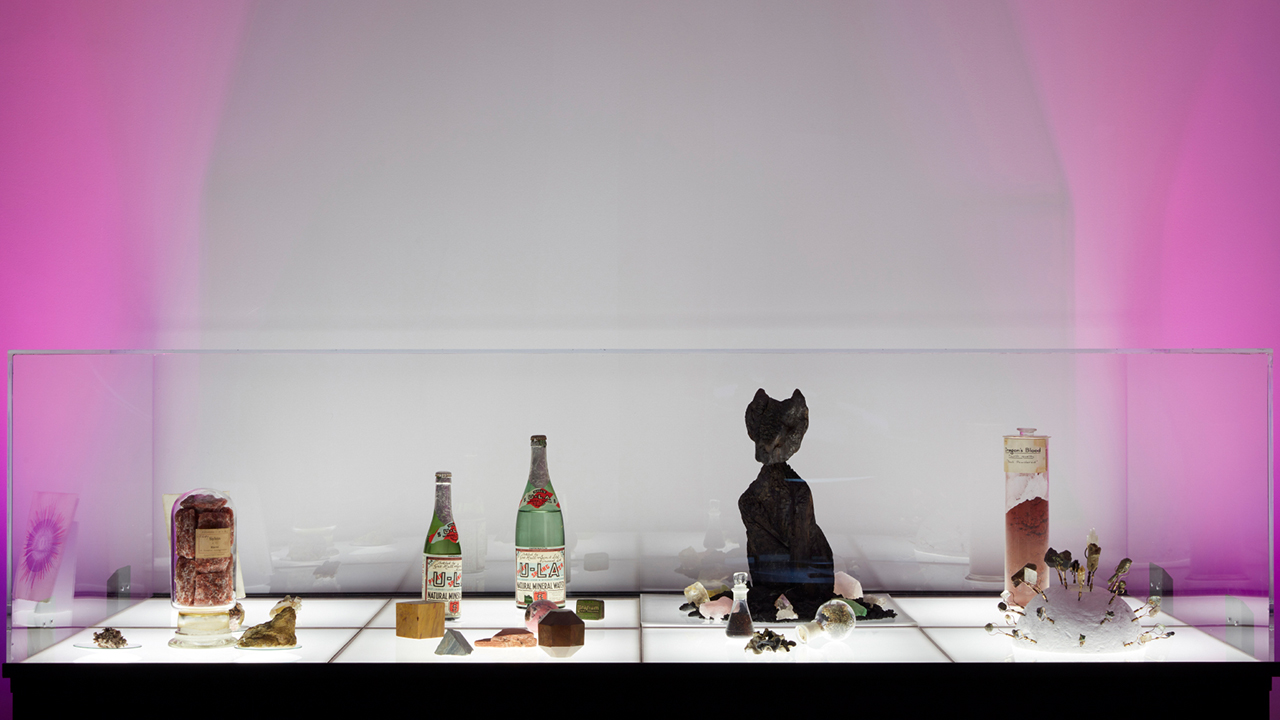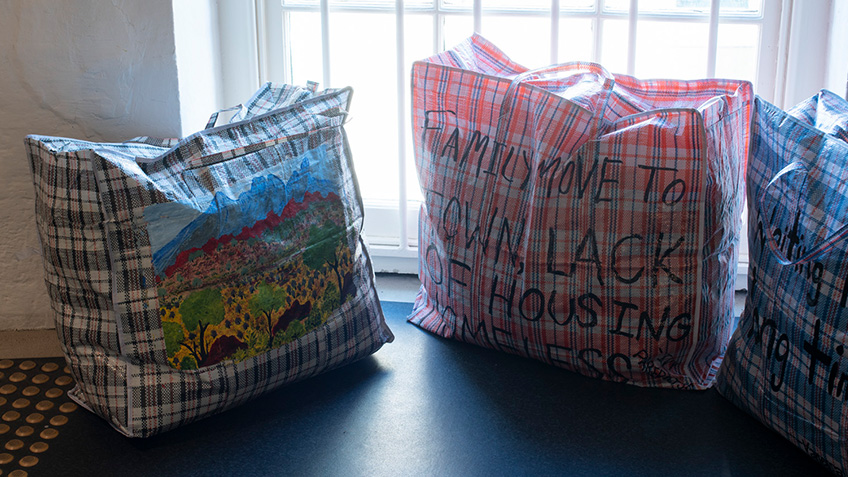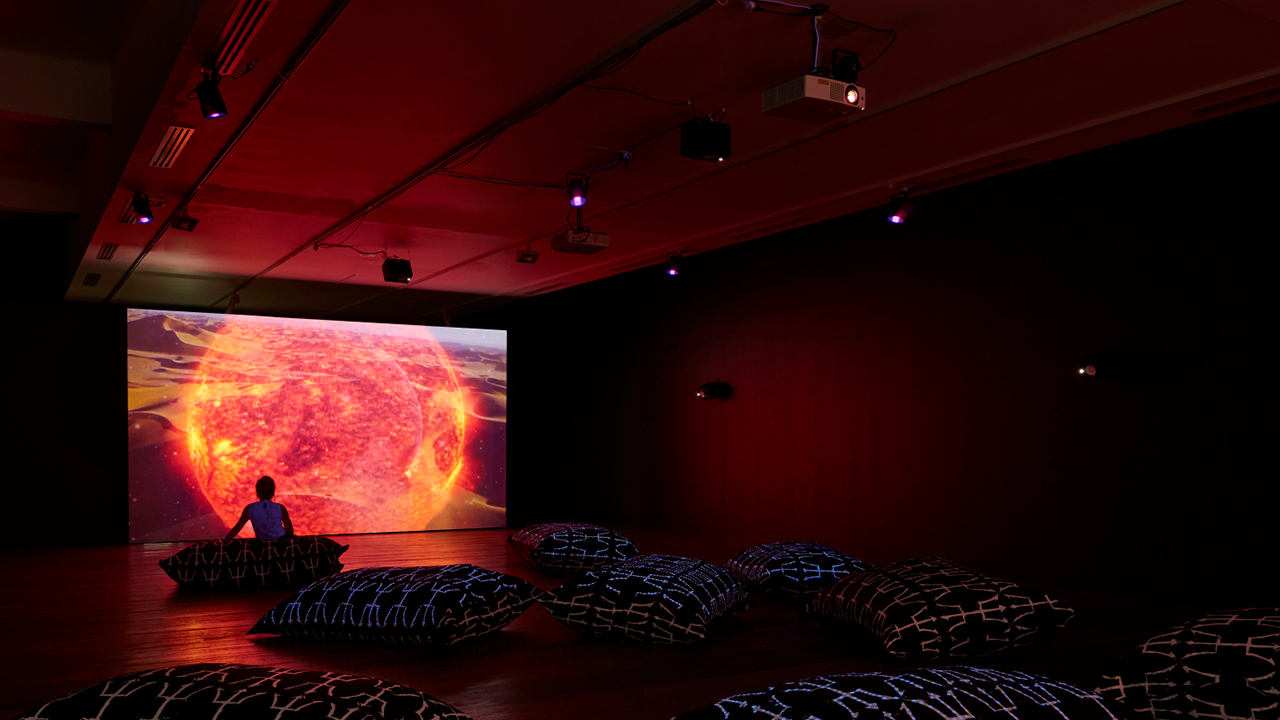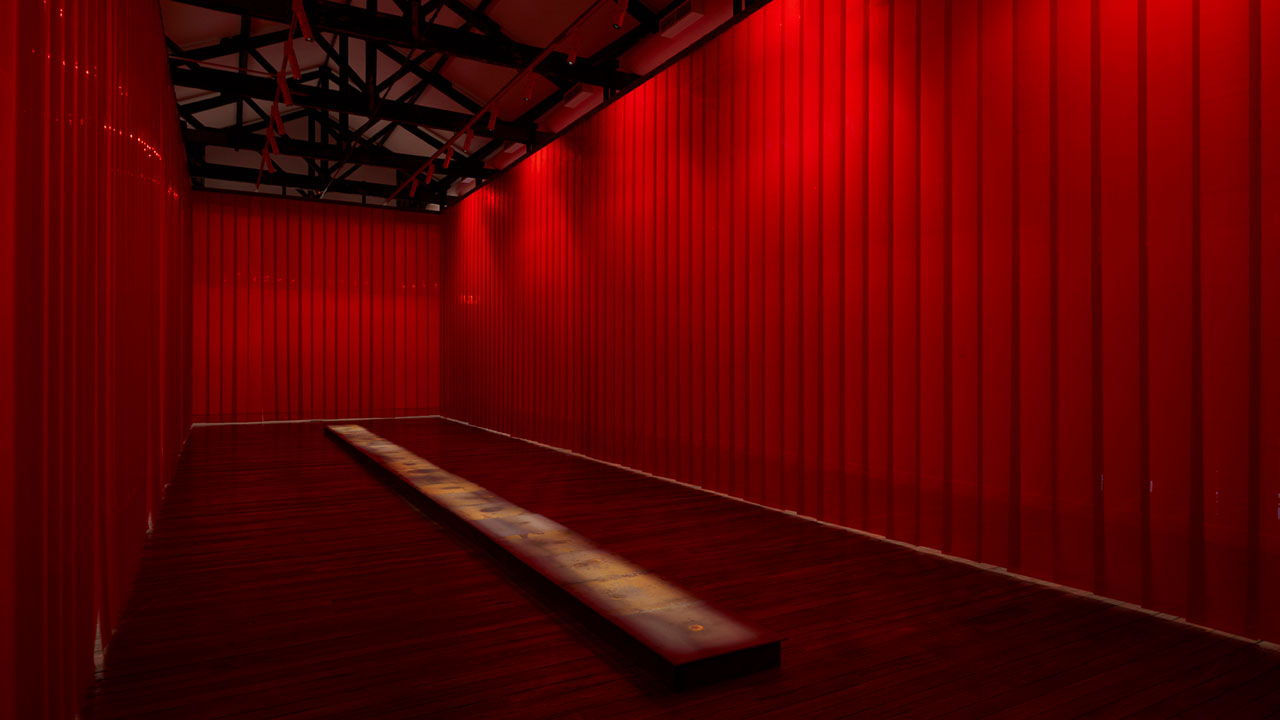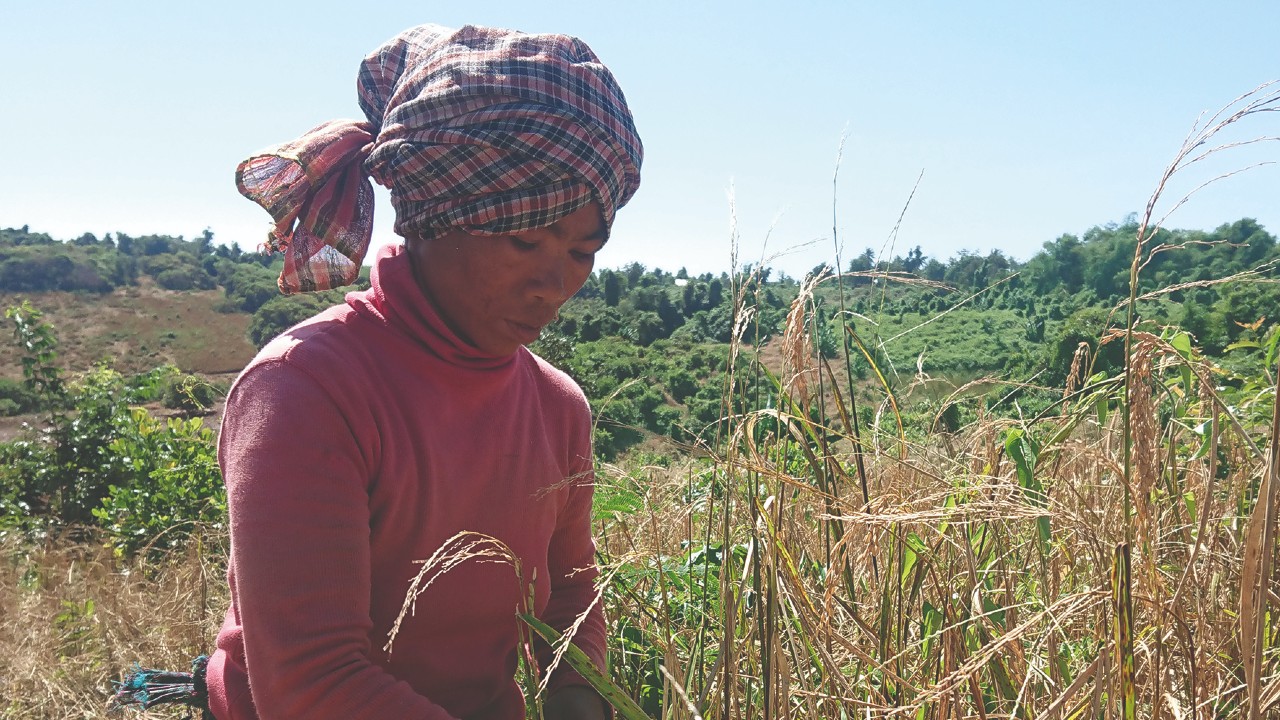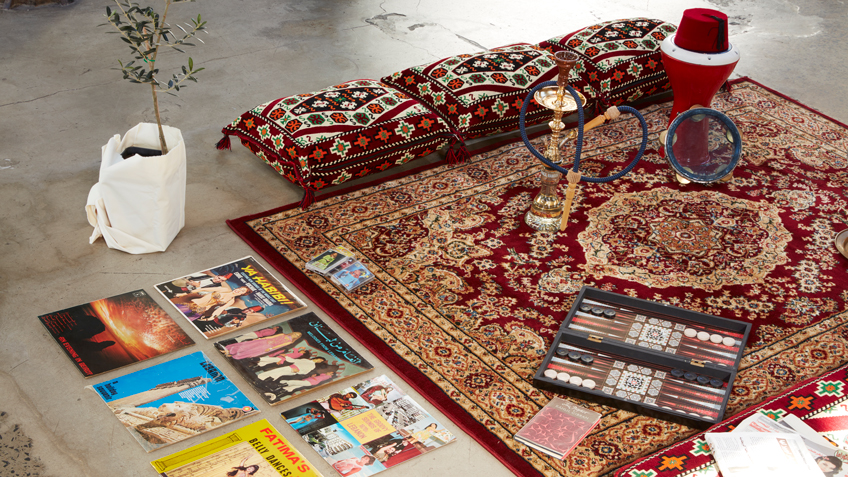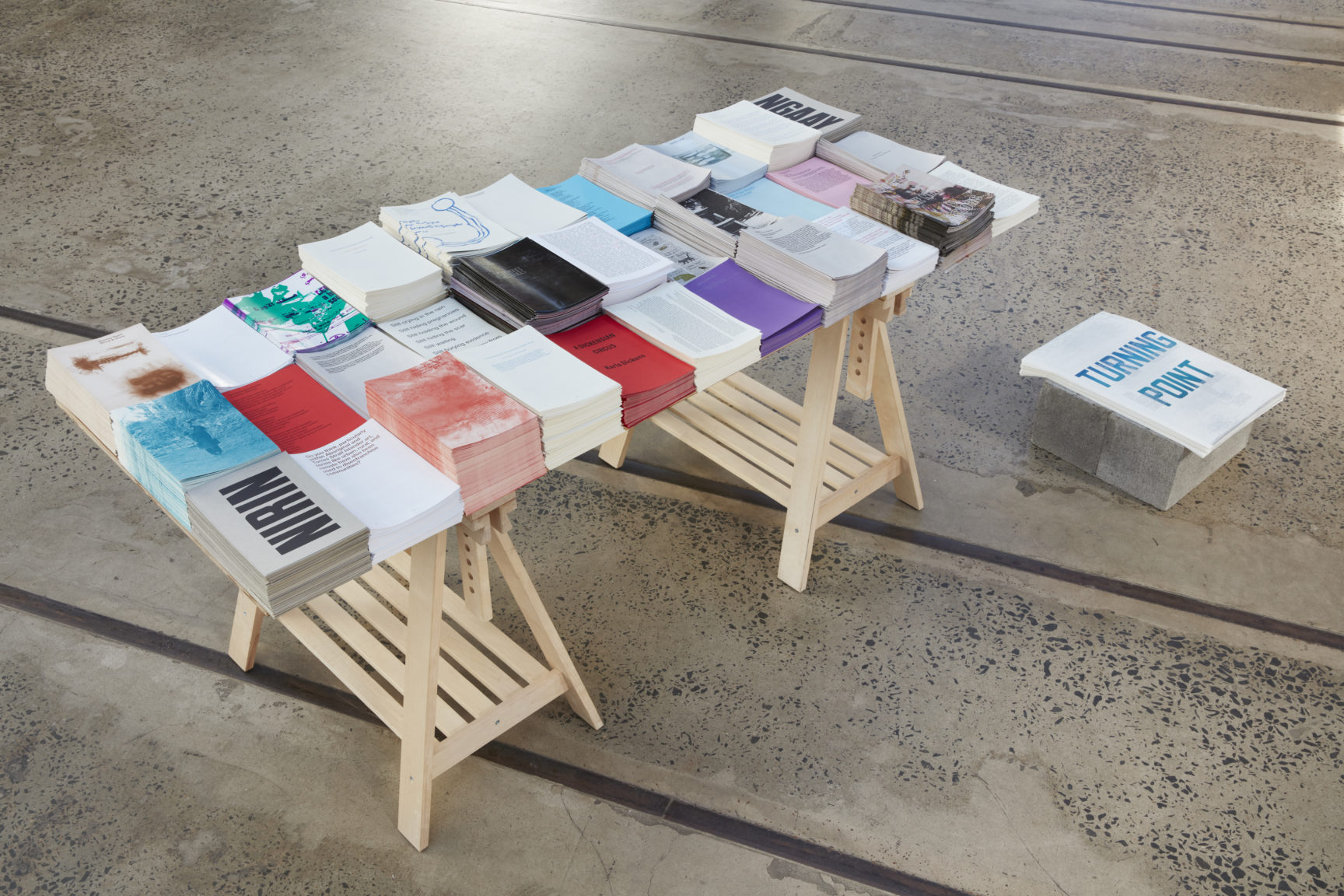We acknowledge the Gadigal people of the Eora Nation; Boorooberongal people of the Dharug Nation; and the Dharawal, Bidiagal and Gamaygal people, on whose ancestral lands and waters NIRIN gathers.
NIRIN is a safe place for people to honour mutual respect and the diversity of expression and thoughts that empower us all.
The 22nd Biennale of Sydney, titled NIRIN, is an international exhibition reaching across Sydney.
‘NIRIN (meaning ‘edge’) and NIRIN WIR (meaning ‘edge of the sky’) are Wiradjuri words. First Nations languages are used throughout the Biennale to highlight the urgency of reviving and sustaining the future of language diversity.
In urgent times of shifting boundaries and conflicts between humanity, nature and spirituality, we desperately need to alter our actions to catch up with expedient change and show respect for ancient cultures. Now is a potent time to heal and feel the rush and tension of new futuristic possibilities.
This is a free exhibition.
Open Wed-Sat, 10am-5pm
Open Wed-Sat, 10am-5pm
Carriageworks is a registered COVID-Safe business. To ensure the wellbeing of our visitors, we are following strict guidelines set by NSW State Government and Live Performance Australia. Help us keep everyone safe by reading our COVID-Safe Plan before your next visit.

